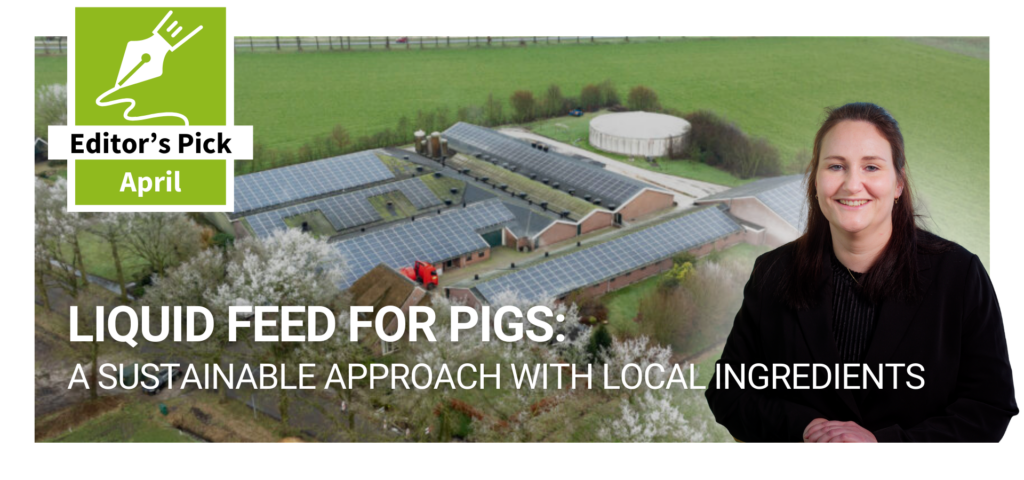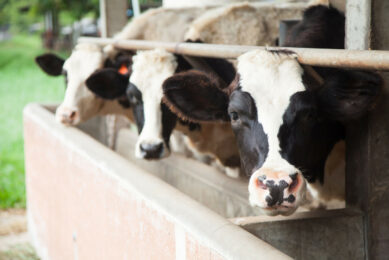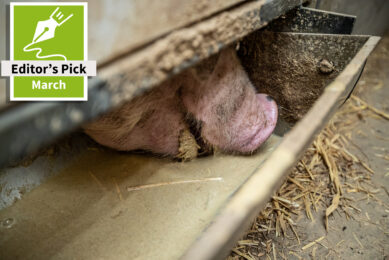Optimising dairy diets: Impact on milk production and rumen function

How can dairy cow performance be optimised for maximum production and rumen function in the herd? Researchers compared 3 dairy cow diets – grass, grass-clover and cows fed a total mixed ration (TMR) indoors to determine its impact on milk production, milk yield and milk solids yield.
Study overview and duration
The study was carried out over 1 complete lactation (calving in February/March and dry-off in November). It compared the rumen function and milk production of cows offered 1 of 3 dietary treatments:
- Cows grazing grass-only swards receiving 250 kg nitrogen (N)/ha/year (Grass),
- Cows grazing grass-white clover swards receiving 250 kg N/ha/year (Grass-Clover),
- Cows offered a total mixed ration diet and housed indoors (TMR).
Rumen cannulation for analysis
To have a deeper look at the rumen and its function during the research, some of the cows had a cannula placed in their rumen to collect rumen content samples.
- 9 primiparous rumen-cannulated cows were used, 3 per treatment per period.
The cannulated cows were added to the grazing herds and the TMR herd for each season and were removed from those herds between seasons. Between seasons the cannulated cows were removed from the experimental area to a non-experimental grassland area and grazed predominantly perennial ryegrass pasture. Each treatment herd had 17 “intact” cows.
Experimental design and rotation
The rumen-cannulated cows were blocked according to calving, body weight, body condition score, milk yield and milk solids yield for the three-week period prior to commencement of the experiment. At the beginning of the experiment, the cows were randomly assigned to 1 of the 3 treatments and then, as per the Latin Square design (where each treatment is assigned to each time period and each [animal] an equal number of times), they moved from one treatment to the next to the last. Each period in the Latin Square lasted 2 weeks, during which the first 10 days were for acclimatisation and measurements were undertaken in the last 4 days.
Grazing and feeding methods
The grazing treatments (Grass and Grass-Clover) were rotationally grazed for the duration of the experiment, achieving 8.3 rotations between mid-February and mid-November.
The TMR group were housed year-round in cubicle accommodation. The TMR consisted of (kg DM):
- 7.15 grass silage,
- 7.15 maize silage, and
- 8.3 concentrates.
TMR concentrate composition
The concentrate blend consisted of (g/kg DM):
- 130 maize,
- 155 molassed beet pulp,
- 300 soybean meal,
- 120 maize distillers,
- 150 barley,
- 75 rapeseed meal,
- 30 megalac,
- 5 salt,
- 7 acid buffer,
- 28 minerals and vitamins.
Rumen and milk production data
Rumen VFA, ammonia, lactic acid and pH data are from the rumen-cannulated cows. The milk production results are from the herd fed each diet during the three seasons—spring (April/May), summer (June/July) and autumn (August/September).
Diet effects on milk yield
The researchers found that the type of diet offered did significantly affect milk production; milk yield and milk solids yield were generally highest on the TMR diet. Rumen sample data indicated that diet also affected rumen function; it altered the rumen volatile fatty acid (VFA), and ammonia and lactic acid profiles significantly but had no effect on rumen pH.
Impact of clover on rumen
Clover inclusion in the sward led to higher (p < 0.05) total VFA and ammonia concentrations compared to Grass and TMR treatments. The increased rumen ammonia concentration was associated with a significantly greater milk urea nitrogen (MUN) content in the milk from cows fed on grass-clover, indicating a greater excess of dietary protein in that treatment.
Key study conclusions
It was concluded that a clover-based dairy cow feeding system could significantly alter rumen function, milk composition and milk yield. Clover inclusion in the diet led to higher total rumen VFA and ammonia concentrations and higher milk urea nitrogen compared to the Grass and TMR diets.
Environmental considerations of clover
Rumen function and animal performance were significantly influenced by dairy cow diet. Including white clover in grazed grass swards resulted in increased milk production compared to Grass, similar milk solids production to TMR, and greater total rumen VFA concentration compared to both the Grass and TMR treatments. However, the increased rumen ammonia and MUN concentrations on the Grass-Clover treatment may be a cause of concern from an environmental perspective.
Future research and sustainability
Therefore, while recent studies have shown the benefits of clover inclusion in terms of increased milk production in pasture-based systems, further research is required into the wider consequences in terms of its potential environmental sequelae. Future research should also place these results in the context of life cycle assessment models in order to provide a holistic comparison of the systems from a carbon footprint perspective.











